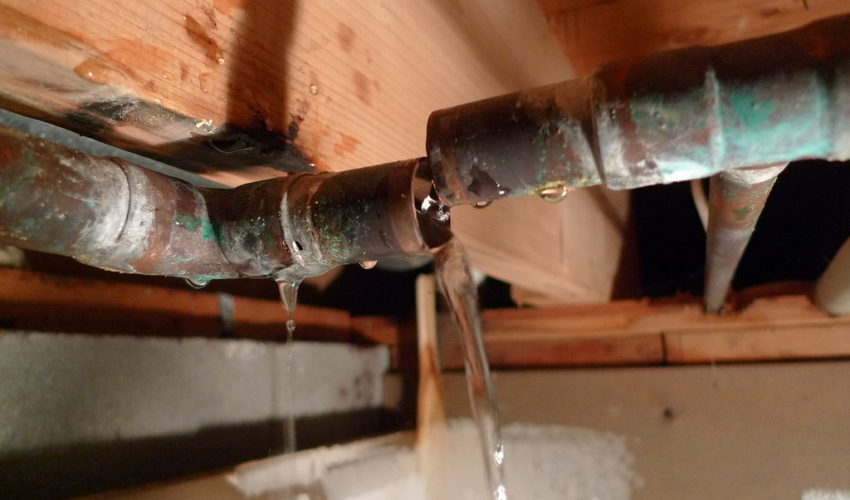Part of enjoying the convenience of modern plumbing in your home means that, inevitably, you will experience a plumbing emergency. If your shower won’t stop spraying water, or your bathtub suddenly fills with murky liquid, or if you find that a pipe has burst, will you know what to do? While your second step should be calling the experts at North East Air Conditioning, Heating & Plumbing, your first step should be to attempt to shut off the water. Read on to learn how you can shut off your home’s water if needed and save yourself the headache, expense, and frantic phone call when that emergency does arise.
Shutting off water supply to a single fixture
Unless you’re faced with an obvious emergency, like a burst pipe, you may want to try addressing a small leak yourself, such as one associated with a washing machine, toilet, or sink. There are typically valves located near these appliances and fixtures that control the water flow to them.
- Washing machine – Every washing machine should have both a hot and cold water valve directly behind it. Turn the valves clockwise to shut off the water to the appliance.
- Toilet – You should find a small valve along the wall behind your toilet which you can turn clockwise to stop any flow of water.
- Sink – Usually hot and cold water valves can be found under the sink along the wall. Similar to the toilet, turn those valves clockwise to stop water flow.
Turning off the water supply to an individual fixture means you’ll still be able to access water from other fixtures and appliances in your home while you wait for a plumber to address your issue. Keep in mind that if you’ve incorrectly assessed your plumbing issue, simply turning off water to a fixture may not solve your larger problem or prevent water damage. We see many times, too, that these valves can become corroded or otherwise non-working over time. If you encounter this, you’ll want to read on, as shutting off the main water supply valve will be your next-best solution.
Shutting off water supply to your home
While shutting off the water supply to your home is not always required for plumbing repairs, in some cases it may be the only way to stop a leak until it can be repaired. Acting quickly can mean the difference between a minor headache and a serious hit to your wallet. At North East, we recommend locating your shutoff valve well before an emergency occurs.
When locating your home’s main water shutoff valve, it’s helpful to understand that there are two possible points where you can shut off the water: at the water meter itself and, if you have one, an auxiliary shut-off valve.
Water Meter
Every home has a water meter maintained by the water provider. The water meter’s function is to indicate how much water is used by the home’s occupants. Water meters are located outside — usually somewhere in the yard — and underground, beneath a round or oval lid. Adjacent or attached to the meter is a shutoff valve, which you can turn — using a water meter key available at any big box home improvement store — to stop water flowing to your home. Be careful here, as any damage incurred to your water meter will be your responsibility (and likely won’t be cheap to repair).
Auxiliary Shut-off Valve
Many homes in South and Central Texas have a shut-off valve installed somewhere between the water meter and the house. An easy way to locate your valve is to reference your home’s inspection report, which should have the exact location of the valve detailed. The valve is often — though not always — within a few feet of the meter. This auxiliary valve is the preferred method of shutting off your water, since you run no risk of damaging the water meter.
Take the time to assess where your valve is, and in the case that you don’t have a main shut-off valve, talk to your plumber about installing one.
Corroded valves are a homeowner’s enemy
Remember that when valves — whether indoor or outdoor — are not used frequently they can become stubborn. Particularly if your home has an auxiliary shutoff valve installed, it’s not a bad idea to close and re-open it from time to time to ensure you could do so in time of an emergency. Make sure anyone in the house old enough to be home without supervision knows how to do this as well. Plumbing emergencies have a way of occurring at the worst times, and you’re less likely to suffer extensive water damage when all occupants of a home are capable of shutting off the water supply.
For over 40 years, North East Air Conditioning, Heating & Plumbing has provided professional and reliable plumbing services to San Antonio and other Central Texas communities. We offer full-service plumbing solutions. Call us today to discuss plumbing maintenance or to address any urgent plumbing needs.
Photo (original shown above) licensed under Creative Commons.


